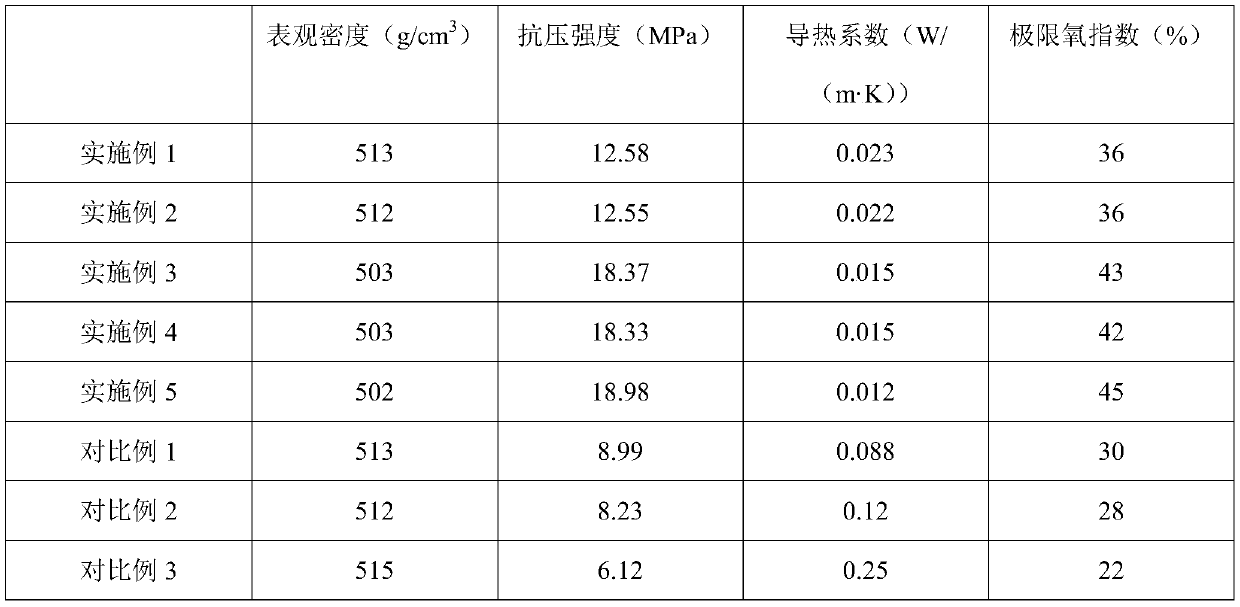Energy-saving self-thermal insulation concrete and production process
A production process and self-insulation technology, applied in the field of construction, can solve problems such as failure to meet the energy-saving requirements of building construction, easy cracking of the insulation layer, and poor heat insulation performance
- Summary
- Abstract
- Description
- Claims
- Application Information
AI Technical Summary
Problems solved by technology
Method used
Image
Examples
Embodiment 1
[0037] An energy-saving self-insulating concrete, which is made of the following components by weight: 180 parts of cement, 50 parts of secondary fly ash, 100 parts of mineral powder, 5 parts of polypropylene fiber, 320 parts of sand, light aggregate 350 parts, 3 parts of admixture, 160 parts of water.
[0038] Wherein, the length of the polypropylene fiber is 20 mm, and the diameter is ≥0.05 mm.
[0039] The admixture is slaked lime.
[0040] Light aggregates include fine and light aggregates and coarse and light aggregates, both of which are compounded by vermiculite, alkali slag, desulfurized gypsum, kaolin and aluminum slag according to the mass ratio of 1:5:10:20:10. The former is crushed to 0.22mm, and the latter is crushed to 5mm; the mass ratio of fine and light aggregates to coarse and light aggregates is 1:1.2. The specific method of compounding is: crush alkali slag and aluminum slag, mix them evenly with vermiculite and kaolin, add water 0.1 times their total wei...
Embodiment 2
[0049] An energy-saving self-insulating concrete, which is made of the following components by weight: 220 parts of cement, 90 parts of secondary fly ash, 130 parts of mineral powder, 10 parts of polypropylene fiber, 370 parts of sand, light aggregate 450 parts, 5 parts of admixture, 190 parts of water.
[0050] Wherein, the length of the polypropylene fiber is 30 mm, and the diameter is ≥0.05 mm.
[0051] The admixture is sulfoaluminate.
[0052] Light aggregates include fine and light aggregates and coarse and light aggregates, both of which are compounded by vermiculite, alkali slag, desulfurized gypsum, kaolin and aluminum slag according to the mass ratio of 1:6:15:30:12 and then pulverized. The former is crushed to 0.88mm, and the latter is crushed to 8mm; the mass ratio of fine and light aggregates to coarse and light aggregates is 1:1.3. The specific method of compounding is: crush alkali slag and aluminum slag, mix them evenly with vermiculite and kaolin, add water 0...
Embodiment 3
[0061] An energy-saving self-insulating concrete, which is made of the following components by weight: 180 parts of cement, 90 parts of secondary fly ash, 100 parts of mineral powder, 10 parts of polypropylene fiber, 320 parts of sand, light aggregate 450 parts, 3 parts of admixture, 190 parts of water.
[0062] Among them, the polypropylene fiber is a recycled modified material, and its preparation method is as follows: cutting and crushing the waste polypropylene material to make a crushed material with a particle size of less than 5mm, washing with water, drying and drying to obtain a dry crushed material; then drying and crushing The material and the polyamide resin are melted and mixed at high temperature at a mass ratio of 1:0.2 to form a molten material; finally, the molten material is spun to obtain polypropylene fibers. The high-temperature melt-mixing method is as follows: mixing the dry crushed material and the polyamide resin together and heating until melting, and...
PUM
| Property | Measurement | Unit |
|---|---|---|
| particle diameter | aaaaa | aaaaa |
| length | aaaaa | aaaaa |
| diameter | aaaaa | aaaaa |
Abstract
Description
Claims
Application Information
 Login to View More
Login to View More - R&D
- Intellectual Property
- Life Sciences
- Materials
- Tech Scout
- Unparalleled Data Quality
- Higher Quality Content
- 60% Fewer Hallucinations
Browse by: Latest US Patents, China's latest patents, Technical Efficacy Thesaurus, Application Domain, Technology Topic, Popular Technical Reports.
© 2025 PatSnap. All rights reserved.Legal|Privacy policy|Modern Slavery Act Transparency Statement|Sitemap|About US| Contact US: help@patsnap.com

